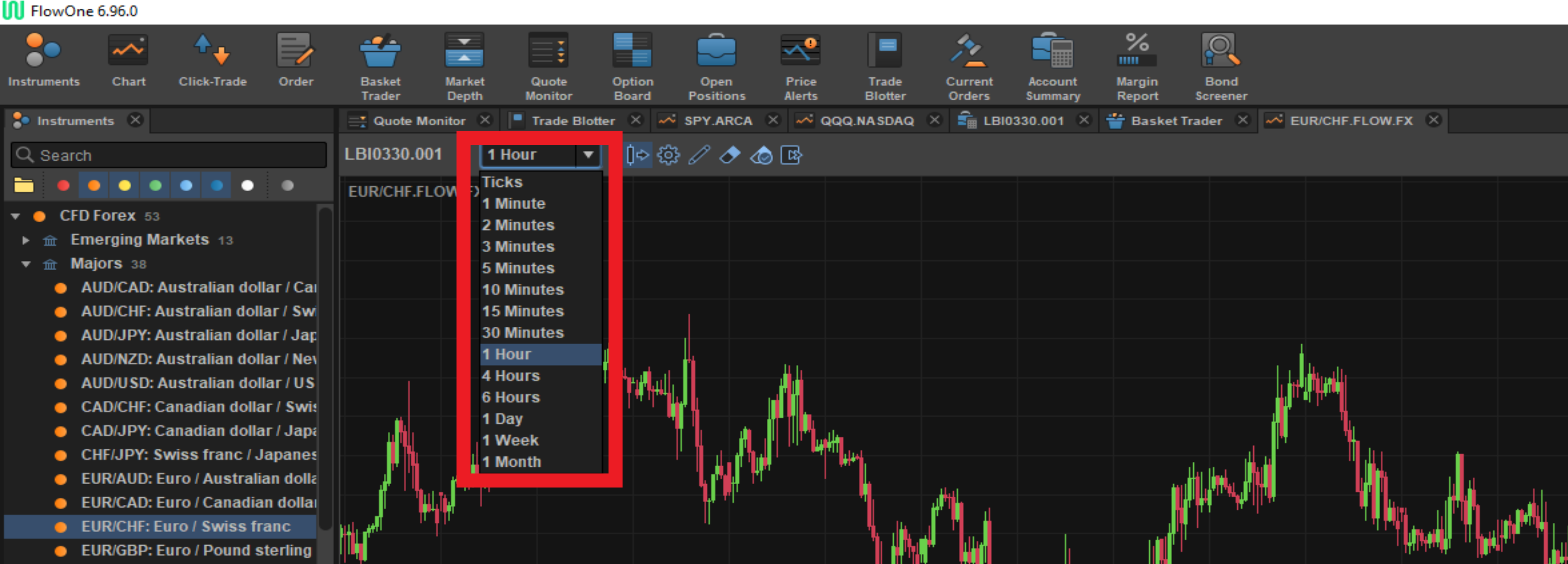
Trading forex can be profitable if traders have a plan. It also prevents traders from cutting profits short or from making costly trading errors. A plan can help traders better manage their emotional reactions in the market. This will lower psychological stress and help traders make more informed trading decisions.
You should tailor your trading plan to suit your trading style. First, traders must choose which markets they want. You have options to choose markets by currency pairs, indices (or commodities), or even futures. You can also choose markets based on volatility and liquidity. It is also important to determine how much you can afford to risk in a particular market. For beginners, it is best to focus on a few markets you are familiar with. A reserve fund should be kept in your account for potential losses.

After you choose the markets you want to trade, you should write them down in your trading plan. You will want to document the trades you enter, the results you get, and the reasons why you entered each trade. Traders should also consider how often they will revisit their trades and report back on them. A personal circuit breaker is a device that prevents traders from trading after losing more than five per cent of their account balance.
After creating your trading plan you can start to implement it in your own trades. This will keep you focused and prevent you making rash decisions during volatile trading situations. Also, you might want to keep track of your stop-loss or take-profit criteria to make it easier to identify when you should take a loss. Also, keep a trading journal so that you can look back at your trades and learn.
You should also determine how much you can afford to risk in each trade. This will help you keep sufficient trading capital in the account. A profit target can be set. It is important to keep track of how many open positions you have at any one time. This will help determine if you are able to open more positions within a particular market.
It is crucial to select the right markets when you create your forex trading plan. Traders can choose from different types of markets, including currency pairs, indices, commodities, futures, and options. Trading in any market is different, so it is important that you remember this. Some of these techniques may include risk management techniques such as limiting your position to a certain number of lots or using a stop-loss to limit your risk.

A personal circuit breaker, or stop-loss, should be part of a forex trading program. This will help you stop trading if you lose more than 5-10% of your account balance.
FAQ
What are the benefits of investing in a mutual fund?
-
Low cost - buying shares directly from a company is expensive. Buying shares through a mutual fund is cheaper.
-
Diversification - Most mutual funds include a range of securities. When one type of security loses value, the others will rise.
-
Professional management - professional managers make sure that the fund invests only in those securities that are appropriate for its objectives.
-
Liquidity is a mutual fund that gives you quick access to cash. You can withdraw your money at any time.
-
Tax efficiency- Mutual funds can be tax efficient. This means that you don't have capital gains or losses to worry about until you sell shares.
-
No transaction costs - no commissions are charged for buying and selling shares.
-
Mutual funds are simple to use. You only need a bank account, and some money.
-
Flexibility: You have the freedom to change your holdings at any time without additional charges.
-
Access to information - you can check out what is happening inside the fund and how well it performs.
-
Investment advice - ask questions and get the answers you need from the fund manager.
-
Security - You know exactly what type of security you have.
-
You can take control of the fund's investment decisions.
-
Portfolio tracking - You can track the performance over time of your portfolio.
-
Ease of withdrawal - you can easily take money out of the fund.
There are disadvantages to investing through mutual funds
-
Limited choice - not every possible investment opportunity is available in a mutual fund.
-
High expense ratio – Brokerage fees, administrative charges and operating costs are just a few of the expenses you will pay for owning a portion of a mutual trust fund. These expenses eat into your returns.
-
Lack of liquidity-Many mutual funds refuse to accept deposits. They can only be bought with cash. This restricts the amount you can invest.
-
Poor customer service - There is no single point where customers can complain about mutual funds. Instead, you should deal with brokers and administrators, as well as the salespeople.
-
Rigorous - Insolvency of the fund could mean you lose everything
What is the trading of securities?
The stock market allows investors to buy shares of companies and receive money. Shares are issued by companies to raise capital and sold to investors. Investors can then sell these shares back at the company if they feel the company is worth something.
Supply and demand are the main factors that determine the price of stocks on an open market. When there are fewer buyers than sellers, the price goes up; when there are more buyers than sellers, the prices go down.
You can trade stocks in one of two ways.
-
Directly from company
-
Through a broker
What is security in the stock exchange?
Security is an asset that generates income for its owner. The most common type of security is shares in companies.
There are many types of securities that a company can issue, such as common stocks, preferred stocks and bonds.
The earnings per share (EPS), as well as the dividends that the company pays, determine the share's value.
When you buy a share, you own part of the business and have a claim on future profits. If the company pays a payout, you get money from them.
Your shares may be sold at anytime.
What's the difference between a broker or a financial advisor?
Brokers help individuals and businesses purchase and sell securities. They handle all paperwork.
Financial advisors are specialists in personal finance. They are experts in helping clients plan for retirement, prepare and meet financial goals.
Financial advisors may be employed by banks, insurance companies, or other institutions. They could also work for an independent fee-only professional.
If you want to start a career in the financial services industry, you should consider taking classes in finance, accounting, and marketing. You'll also need to know about the different types of investments available.
What is a Mutual Fund?
Mutual funds are pools of money invested in securities. They offer diversification by allowing all types and investments to be included in the pool. This reduces risk.
Professional managers are responsible for managing mutual funds. They also make sure that the fund's investments are made correctly. Some funds offer investors the ability to manage their own portfolios.
Mutual funds are preferable to individual stocks for their simplicity and lower risk.
What's the difference among marketable and unmarketable securities, exactly?
The main differences are that non-marketable securities have less liquidity, lower trading volumes, and higher transaction costs. Marketable securities can be traded on exchanges. They have more liquidity and trade volume. Marketable securities also have better price discovery because they can trade at any time. There are exceptions to this rule. For example, some mutual funds are only open to institutional investors and therefore do not trade on public markets.
Non-marketable security tend to be more risky then marketable. They have lower yields and need higher initial capital deposits. Marketable securities can be more secure and simpler to deal with than those that are not marketable.
For example, a bond issued by a large corporation has a much higher chance of repaying than a bond issued by a small business. The reason for this is that the former might have a strong balance, while those issued by smaller businesses may not.
Investment companies prefer to hold marketable securities because they can earn higher portfolio returns.
Statistics
- Individuals with very limited financial experience are either terrified by horror stories of average investors losing 50% of their portfolio value or are beguiled by "hot tips" that bear the promise of huge rewards but seldom pay off. (investopedia.com)
- Our focus on Main Street investors reflects the fact that American households own $38 trillion worth of equities, more than 59 percent of the U.S. equity market either directly or indirectly through mutual funds, retirement accounts, and other investments. (sec.gov)
- US resident who opens a new IBKR Pro individual or joint account receives a 0.25% rate reduction on margin loans. (nerdwallet.com)
- Even if you find talent for trading stocks, allocating more than 10% of your portfolio to an individual stock can expose your savings to too much volatility. (nerdwallet.com)
External Links
How To
How to make a trading program
A trading plan helps you manage your money effectively. It allows you to understand how much money you have available and what your goals are.
Before creating a trading plan, it is important to consider your goals. You might want to save money, earn income, or spend less. You may decide to invest in stocks or bonds if you're trying to save money. You can save interest by buying a house or opening a savings account. If you are looking to spend less, you might be tempted to take a vacation or purchase something for yourself.
Once you know your financial goals, you will need to figure out how much you can afford to start. This will depend on where and how much you have to start with. Consider how much income you have each month or week. Income is what you get after taxes.
Next, save enough money for your expenses. These include bills, rent, food, travel costs, and anything else you need to pay. These all add up to your monthly expense.
You will need to calculate how much money you have left at the end each month. This is your net income.
Now you've got everything you need to work out how to use your money most efficiently.
Download one online to get started. You can also ask an expert in investing to help you build one.
Here's an example spreadsheet that you can open with Microsoft Excel.
This graph shows your total income and expenditures so far. This includes your current bank balance, as well an investment portfolio.
And here's another example. A financial planner has designed this one.
This calculator will show you how to determine the risk you are willing to take.
Do not try to predict the future. Instead, put your focus on the present and how you can use it wisely.